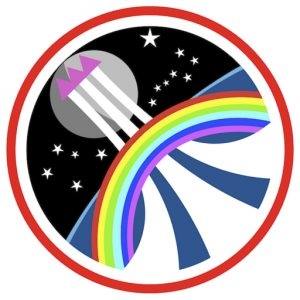Neptune is the eighth planet from the sun in our solar system. This blue gas giant is far larger than Earth, at more than 17 times Earth's mass and nearly 58 times Earth's volume, according to NASA. Neptune's rocky core is surrounded by a slushy fluid mix of water, ammonia and methane ice.
Astronomer Galileo Galilei was one of the first people to identify Neptune as a space object, however, he assumed it was a star based on its slow movement.
Around two hundred years later, in 1846, French astronomer Urbain Jean Joseph Le Verrier calculated the approximate location of Neptune by studying gravity-induced disturbances in the motions of Uranus, according to a synopsis written by researchers at the University of St. Andrews in Scotland
In accordance with all the other planets seen in the sky, and as suggested by Le Verrier, this new world was given a name from Greek and Roman mythology — Neptune, the Roman god of the sea.
Only one mission has flown by Neptune — Voyager 2 in 1989. Today, there are still many mysteries about the cool, blue planet, such as why its winds are so speedy and why its magnetic field is offset. While Neptune is of interest because it is in our own solar system, astronomers are also interested in learning more about the planet to assist with exoplanet studies. Specifically, astronomers are interested in learning about the habitability of worlds that are bigger than Earth.
Like Earth, Neptune has a rocky core, but it has a much thicker atmosphere that prohibits the existence of life as we know it. Astronomers are still trying to figure out at what point a planet is so large that it may pick up a lot of gas in the area, making it difficult or impossible for life to exist.
WHAT DOES NEPTUNE LOOK LIKE?
Neptune is the fourth largest planet in the solar system, with a radius 15,599.4 miles (24,622 kilometres) — the distance between its core and the surface. However, Neptune is a spheroid shape, meaning that it bulges around its equator, making the the radius to the pole slightly smaller.
The planet's cloud cover has an especially vivid blue tint that is partly due to an as-yet-unidentified compound and the result of the absorption of red light by methane in the planet's mostly hydrogen-helium atmosphere.
By studying the cloud formations on the gas giant, scientists were able to calculate that a day on Neptune lasts just under 16 hours long.
Neptune's elliptical, oval-shaped orbit keeps the planet an average distance from the sun of almost 2.8 billion miles (4.5 billion kilometers), or roughly 30 times as far away as Earth, making it invisible to the naked eye. A single orbit of sun takes Neptune 165 Earth years to complete.
Neptune is surrounded by unusual rings, which aren't uniform, but possess bright thick clumps of dust called arcs.
NEPTUNE'S MOONS
Neptune has 14 known moons, named after lesser sea gods and nymphs from Greek mythology. The largest by far is Triton, whose discovery on Oct. 10, 1846, was indirectly enabled by beer — amateur astronomer William Lassell, who discovered Triton, used the funds he made as a brewer to finance his telescopes.
Triton is the only spherical moon of Neptune. The planet's other 13 moons are irregularly shaped. Triton is also unique in being the only large moon in the solar system to circle its planet in a direction opposite to its planet's rotation — this "retrograde orbit" suggests that Triton may once have been a dwarf planet that Neptune captured rather than forming in place, according to NASA. Neptune's gravity is dragging Triton closer to the planet, meaning that millions of years from now, Triton will come close enough for gravitational forces to rip it apart.
Triton is extremely cold, with temperatures on its surface reaching about minus 391 degrees F (minus 235 degrees C), making it one of the coldest places in the solar system. Nevertheless, Voyager 2 detected geysers spewing icy matter upward more than 5 miles (8 km), showing its interior appears warm. Scientists are investigating the possibility of a subsurface ocean on the icy moon. In 2010, scientists discovered seasons on Triton.
Megathreads and spaces to hang out:
- ❤️ Come listen to music and Watch movies with your fellow Hexbears nerd, in Cy.tube
- 💖 Come talk in the New Monthly queer thread
- 🧡 Monthly Neurodiverse Megathread
- 💛 Read about a current topic in the news
- ⭐️ October Movie Nominations ⭐️
reminders:
- 💚 You nerds can join specific comms to see posts about all sorts of topics
- 💙 Hexbear’s algorithm prioritizes struggle sessions over upbears
- 💜 Sorting by new you nerd
- 🌈 If you ever want to make your own megathread, you can go here nerd
- 🐶 Join the unofficial Hexbear-adjacent Mastodon instance toots.matapacos.dog
Links To Resources (Aid and Theory):
Aid:
- 💙Comprehensive list of resources for those in need of an abortion -- reddit link
- 💙Resources for Palestine
Theory:
- ❤️Foundations of Leninism
- ❤️Anarchism and Other Essays
- ❤️Mega upload with theory for many tendencies
Remember nerds, no current struggle session discussion here to the general megathread, i will ban you from the comm and remove your comment, have a good day/night :meow-coffee:
porn companies after years of declining profits:
nobody wants to jerk anymore
New Megathread Nerds!!! :curry-space:
-
🐶 Join the unofficial Hexbear-adjacent Mastodon instance toots.matapacos.dog
-
🌈 If you ever want to make your own megathread, you can go here nerd
@aaaaaaadjsf @Abraxiel @Acute_Engles @American_Communist22 @AnarchaPrincess @Antilope @Alaskaball @Aliveelectricwire @bbnh69420 @BigLadKarlLiebknecht @buh @CatEars420 @cawsby @CDommunist @Cheesewizzard @Cherufe @ClimateChangeAnxiety @clover @comi @Commander_Data @ComradeCmdrPiggy @ComradeEchidna @context @congressbaseballfan @corgiwithalaptop @crime @Cromalin @CyborgMarx @Dawn_Beveridge @Dirt_Owl @Dolores @Donut @drinkinglakewater @ElChapoDeChapo @ElGosso @el_principito @EmmaGoldman @FidelCashflow @Flinch @flowernet @forcequit @Frogmanfromlake @Gabbo @GalaxyBrain @ghosts @Goadstool @GorbinOutOverHere @GoroAkechi @Grownbravy @GVAGUY3 @HarryLime @hexaflexagonbear @HoChiMaxh @Hohsia @Ho_Chi_Chungus @Ideology @InevitableSwing @iwillavengeyoufather @I_HATE_JOHN_CALVIN @jabrd @JamesConeZone @Kanna @Kaputnik @Koa_lala @kristina @LesbianLiberty @marxisthayaca
@MaxOS @MelaniaTrump @Mindfury @Nakoichi @PaulSmackage @plinky @PM_ME_YOUR_FOUCAULTS @PorkrollPosadist @President_Obama @PurrLure @Ram_The_Manparts @Redcuban1959 @RNAi
@Rojo27 @RoseColoredVoid @solaranus @SorosFootSoldier @Sickos @silent_water @Sphere @Spike @spring_rabbit @ssjmarx @take_five_seconds @TankieTanuki @Teekeeus @Tervell
@TheSpectreOfGay @ThisMachinePostsHog @ultraviolet @UlyssesT @Venustum @viva_la_juche @WhyEssEff @WIIHAPPYFEW @wtypstanaccount04 @wombat @Yanqui_UXO @Zoift @Zuzak@thelastaxolotl @WhoaSlowDownMaurice @Quimby @Lydia
@CARCOSA @liberal @ella @all_that_is_solid @KenBonesWildRide @KiraNerys @TomboyShulk @DuckNuckem @SapGreen @Zangief @scumlord @COMMENT @Antisocial_Socialist @DOPESMOKERDENG
Remember nerds, no current struggle session discussion here on the general megathread, i will ban you from the comm and remove your comment, have a good day/night :meow-coffee:
-
guys i'm reading Das Kapital. Where does Marx talk about why I can't have sex???
The intersection of knowing valentine's day is capitalist nonsense
but really missing someone too :sadness:
:stalin-heart: During the sexual encounter, there must be a remembrance of Stalin :stalin-heart:
I got a takeaway today and tried to find somewhere to sit down and eat it. After half an hour of not finding a seat, I gave up and just ate it on the street.
“You are horrified at our intending to do away with private property. But in your existing society private property is already done away with for nine-tenths of the population; its existence for the few is solely due to its non-existence in the hands of those nine-tenths."
You know I'm starting to think this Marx guy had a point
at this very moment in time I am getting paid to shit
Death to America
There's a :blahaj: sticker??????
:blahaj: :blahaj: :blahaj: :blahaj: :blahaj: :blahaj: :blahaj: :blahaj: :blahaj: :blahaj: :blahaj: :blahaj:
Worried residents near Ohio train derailment report dead fish and chickens as authorities say it's safe to return
Completely normal stuff.
goes into a cracker barrel
it's full of crackers
:dead-dove-1: :dead-dove-2: :dead-dove-3:
Bit idea: Democracy
What if the government did the stuff people wanted it to? They could just ask us periodically and we could tell them what we like, or what we think isn't working. Sounds kinda silly I know.
China just shoved a huge balloon up my butt and began pumping it with a bicycle pump!!
Oh it's Valentine's Day huh? I will sing to my cat Mr. Softie later and tell him how much I love him.
Day of love comrade, love of all kinds is good, especially including pets :meow-tankie:
I don’t know my new roommates’ cats well enough to tell them that, but I do sing incredibly generic fake songs to them when they appear. “ [Name!] Bein’ a cat! Doin’ cat stuff!”

















